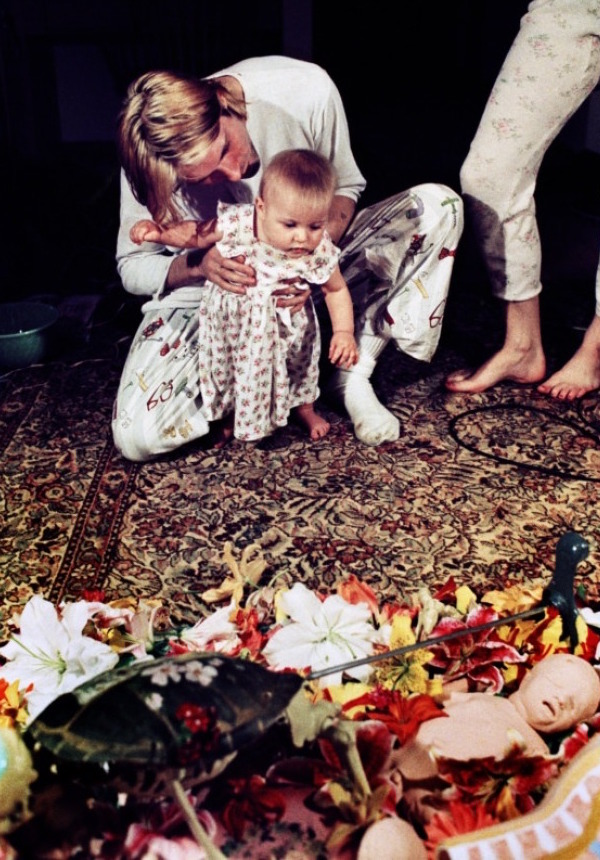A grotesque oblivion
from the print issue
Aberdeen, Washington, 1972.
A scruffy kid sits cross-legged on the carpet, furiously scribbling at comics featuring the “Creature from the Black Lagoon”. Norman Rockwell Franklin Mint plates and mushroom carvings cast an almost ghoulish shadow on the boy’s back: images of suburban American idyll are contrasted with somewhat creepy, childish renditions of Donald Duck.
It’s not the type of thing we generally associate with Kurt Cobain. His upbringing is well-documented, a familiar cocktail of divorce and domestic violence tossing him from home to home, far from his grandmother’s care and odd taste in home decor. Not many people think of him as a visual artist, choosing instead to focus their attention on “Montage of Heck” and various other musical experiments he did in the run-up to Nirvana’s peak. Over 50 paintings, sculptures and sketches remain a footnote in many musical biographies, perhaps earning a passing mention in the context of the “Incesticide” and “In Utero” album covers, or as the morbid backdrop to films focusing on his untimely death.
“Hyperpylaurie Fistula Rectal Abscess Gastroenteritis Conjunctivitis Spinabiffida” by Kurt Cobain
“Incesticide” by Kurt Cobain
Cobain’s chief source of income was music, but our relative aversion to his visual artistry runs deeper than that. Speaking to Erica Ehm in 1993, he said, “I’ve always been fascinated with medical texts and charts, guess I secretly want to be a doctor or something, I don’t know. I’ve always been interested in anatomy, ever since I first got that model of the visible man”. The resulting images are arresting - grotesque, humanoid personifications of the raw screams characterising songs like “Scentless Apprentice”.
Even the lesser-polished tracks of Nirvana’s limited discography have a certain distance to them, Cobain himself claimed many of his lyrics were “garbage, last minute”, and listeners frequently adapt the music to their own situation or cover pieces online. Skeletal figurines, porcelain dolls and nude images of Courtney Love littered with flower-heads are harder to repurpose. They take on a life of their own in Brett Morgen’s 2015 animated documentary, but even in static form they provide a closer look into 90s underground life that is in some ways more warped, frenetic, visceral than music alone can offer.
Kurt, Courtney and Frances Bean in front of the collage used for the back cover of “In Utero”, photographed by Charles Peterson
Photograph by Kurt Cobain, featured on the back cover of Nirvana’s Lithium EP
Internalised anguish at what Charles Cross describes as the “emotional holocaust” of Cobain’s early life, as well as a history of suicide in both family lines, might explain his affinity for fractured skulls and foetuses. There’s a dark humour to his works too though, gaudy flowers are contrasted with defaced hallmark cards, caricatures of bandmates, even a Chim Chim toy poised against pictures of unhealthy vaginas. Regardless of any hidden meaning, it provokes an emotional response that freezes us in place.
Almost 25 years following his death, lingering interest in Cobain’s complexities beyond Nirvana will hopefully shed some more light on these artworks. If he’d lived, there’s nothing to say he couldn’t have followed in the footsteps of fellow musician Mike Kelley: best known for Sonic Youth’s 1992 “Dirty” cover, and whose uniquely sardonic, abject pieces won him critical recognition in high art institutes. Both renegades were taken too soon by clinical depression, but continue to inspire with their artistry.
By Claudia Hockey






